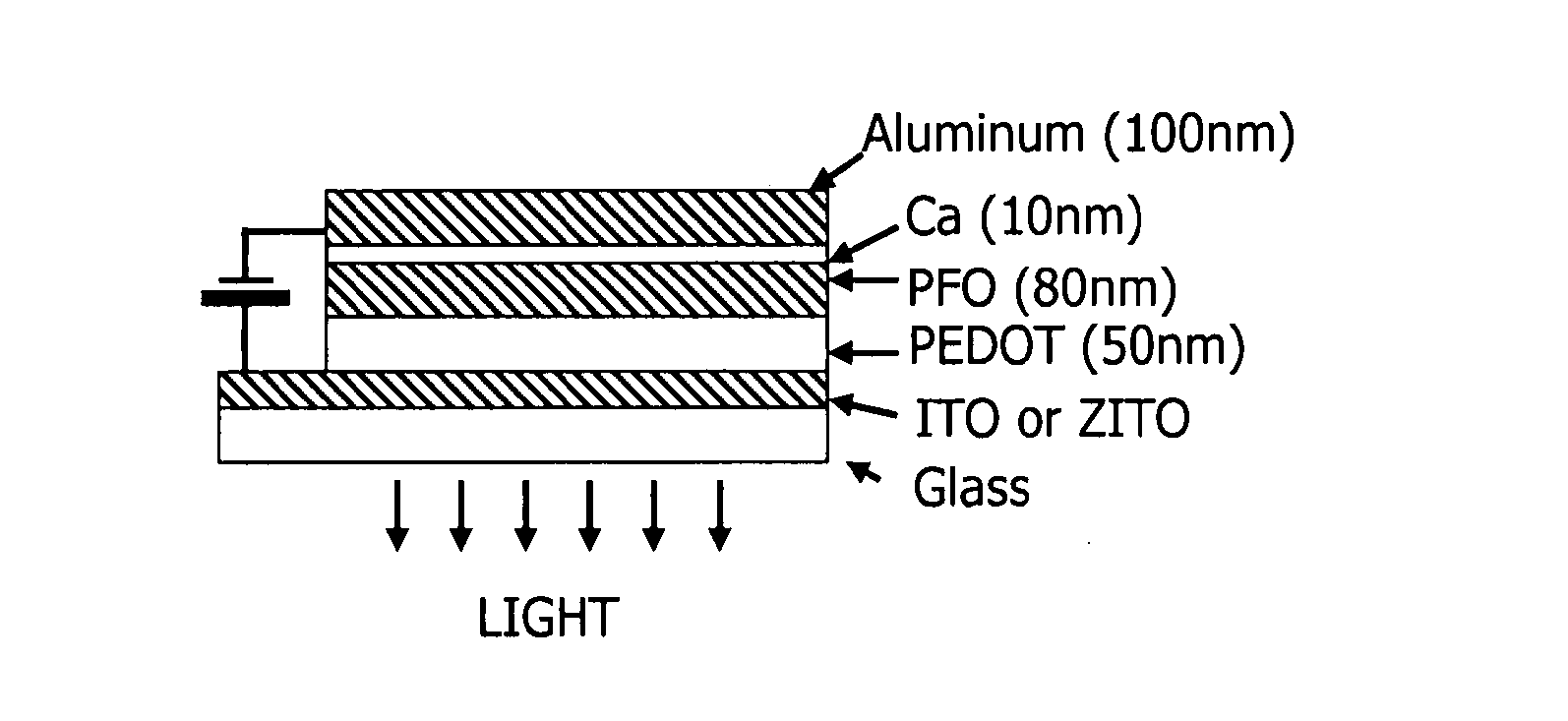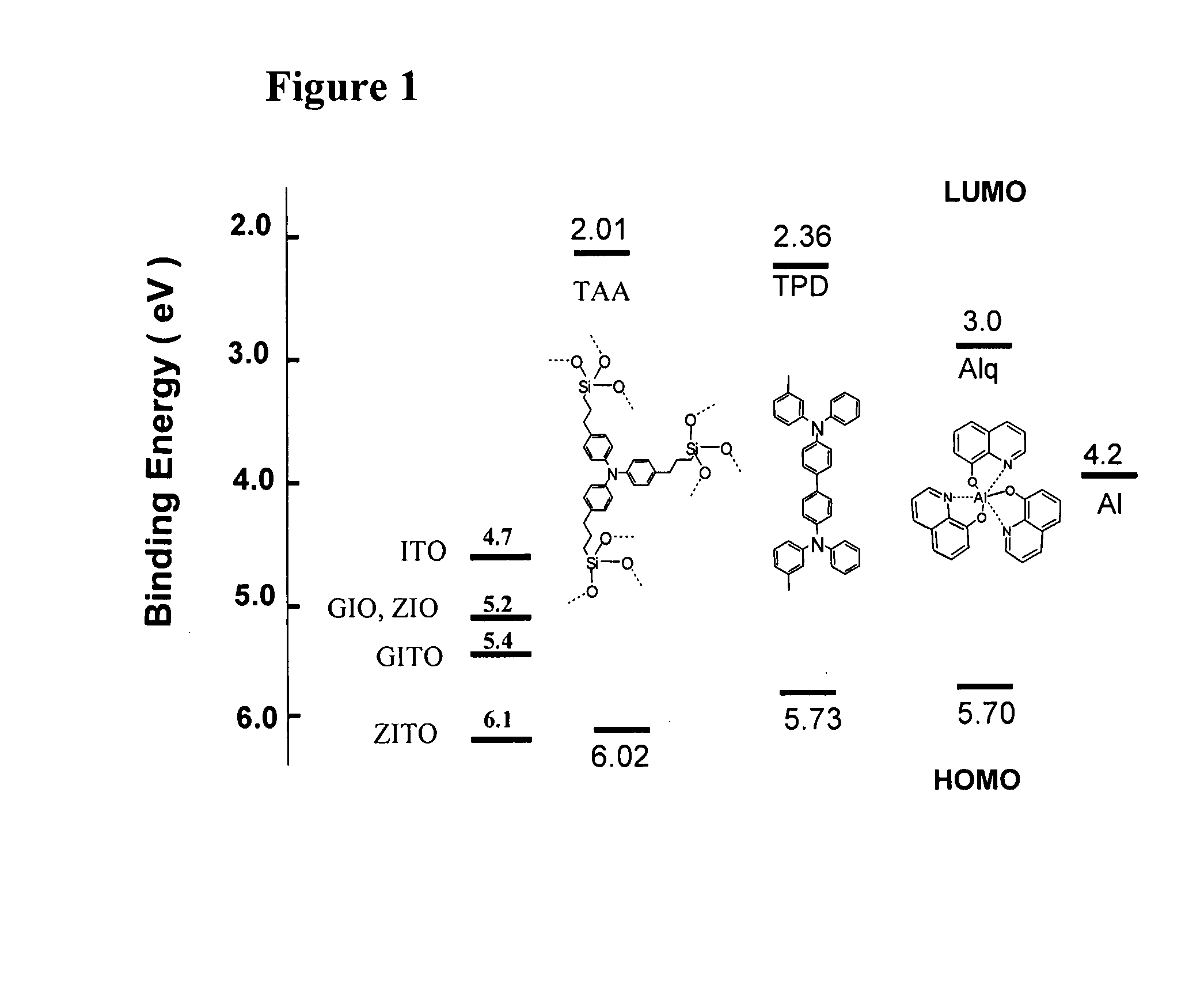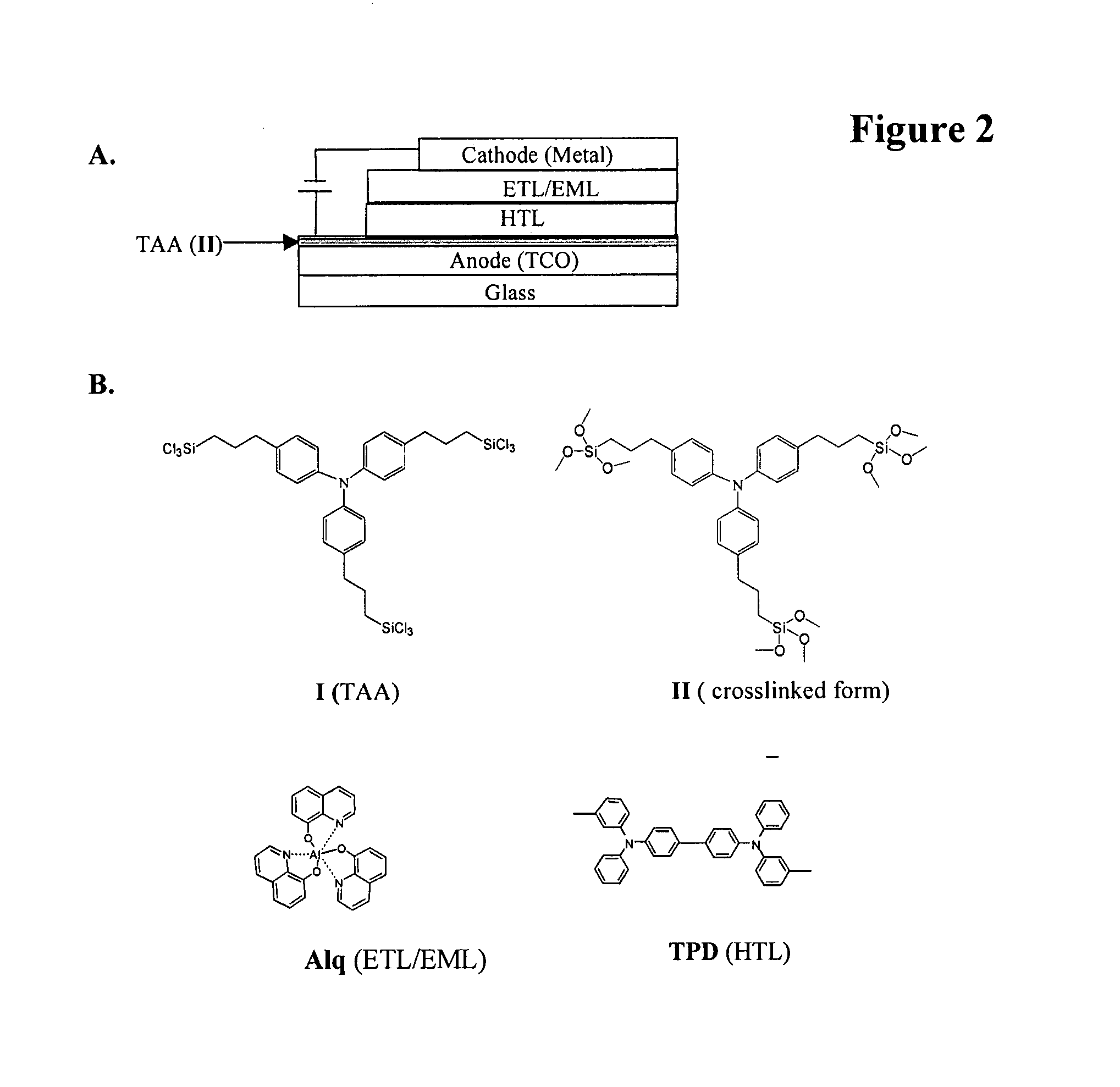Transparent conducting oxide thin films and related devices
a technology of conducting oxide and conducting oxide, applied in the direction of discharge tube/lamp details, natural mineral layered products, synthetic resin layered products, etc., can solve the problems of increasing the price of indium, the generation of flat panel display and photovoltaic technologies, and the supply deficit of indium, so as to achieve enhanced chemical vapor deposition, simple procedures, and satisfactory surface smoothness
- Summary
- Abstract
- Description
- Claims
- Application Information
AI Technical Summary
Benefits of technology
Problems solved by technology
Method used
Image
Examples
example 1
[0106] Growth conditions (MOCVD) on float glass substrates and characterization of ZITO, ZIO, GITO, and GIO thin films by X-ray diffraction, SEM, TEM, and AFM, as well as by other compositional, electrical, and microstructural techniques have been described previously. Microstructurally, all have homogeneously doped cubic In2O3 bixbyite crystal structures, and surface rms roughnesses comparable to commercial ITO. Effective work functions were determined by UV spectroscopy using the 21.8 eV He (I) source (Omicron H1513) of a Kratos Axis-Ultra 165 photoelectron spectrometer. (R. Schlaf, B. A. Parkinson, P. A. Lee, K. W. Nebesny, N. R. Armstrong, Appl. Phys. Lett. 1998, 73, 1026.) Work functions were obtained by lightly sputtering the TCO surface with an Ar+ beam (1 keV), to remove adventitious impurities (as revealed by XPS) and then recording the difference in energy between the high kinetic energy onset and the low kinetic energy cutoff for photoionization. Samples were biased at −5...
example 2
[0107] Relevant properties of several TCO anodes of this invention are summarized in Table 1, below. Note that all have lower optical absorption coefficients than commercial ITO (Donelley Corp., 20 Ω / □). The visible transparency windows of these films are also significantly broader than that of ITO. (A. Wang, N. L. Edleman, J. R. Babcock, T. J. Marks, M. A. Lane, P. W. Brazis, C. R. Kannewurf, i Mater. Res. Soc. Symp. Proc. 2000, 607, 345.) Although ZIO and GIO have somewhat lower n-type conductivities (700-1000 S / cm) than commercial ITO (˜3000 S / cm), the Sn-doped versions (GITO, ZITO) exhibit comparable values (2000-3300 S / cm). As currently understood, GITO and ZITO are the most transparent and among the most conductive TCO materials available for OLED fabrication. In terms of robustness, all of the present films are more chemically, inert than commercial ITO; e.g., to remove a 120 nm thick ITO film using 20% aqueous HCl at 25° C. requires ˜5 min, while comparable degradation of GI...
example 3
[0108] For OLED fabrication, the as-grown TCO and commercial ITO films were subjected to identical sequential cleaning with HPLC grade acetone, isopropanol, and methanol, then with an oxygen plasma to eliminate organic residues. All of the freshly cleaned metal oxide surfaces are highly hydrophilic as evidenced by advancing aqueous contact angles of 0°. A thin, crosslinked TAA layer derived from N(4-C6H4CH2CH2CH2SiCl3)3 (I, FIG. 2) was then spin-coated onto each of the anode surfaces from a 1 mM toluene solution and cured at 120° C. for 1.0 hour. This layer has been shown in previous work to enhance TCO / HTL interfacial cohesion and charge injection efficiency. The TAA films are robust, adherent, contiguous, and electroactive, with ˜1.5 nm RMS roughness on all TCO substrates, and having a thickness of ˜15 nm (by X-ray reflectivity.) (W. Li, J. E. Malinsky, H. Chou, W. Ma, L. Geng, T. J. Marks, G. E. Jabbour, S. E. Shaheen, B. Kippelen, N. Pegyhambarian, A. J. R. P. Dutta, J. Anderson...
PUM
| Property | Measurement | Unit |
|---|---|---|
| conductivity | aaaaa | aaaaa |
| thickness | aaaaa | aaaaa |
| thickness | aaaaa | aaaaa |
Abstract
Description
Claims
Application Information
 Login to View More
Login to View More - R&D
- Intellectual Property
- Life Sciences
- Materials
- Tech Scout
- Unparalleled Data Quality
- Higher Quality Content
- 60% Fewer Hallucinations
Browse by: Latest US Patents, China's latest patents, Technical Efficacy Thesaurus, Application Domain, Technology Topic, Popular Technical Reports.
© 2025 PatSnap. All rights reserved.Legal|Privacy policy|Modern Slavery Act Transparency Statement|Sitemap|About US| Contact US: help@patsnap.com



